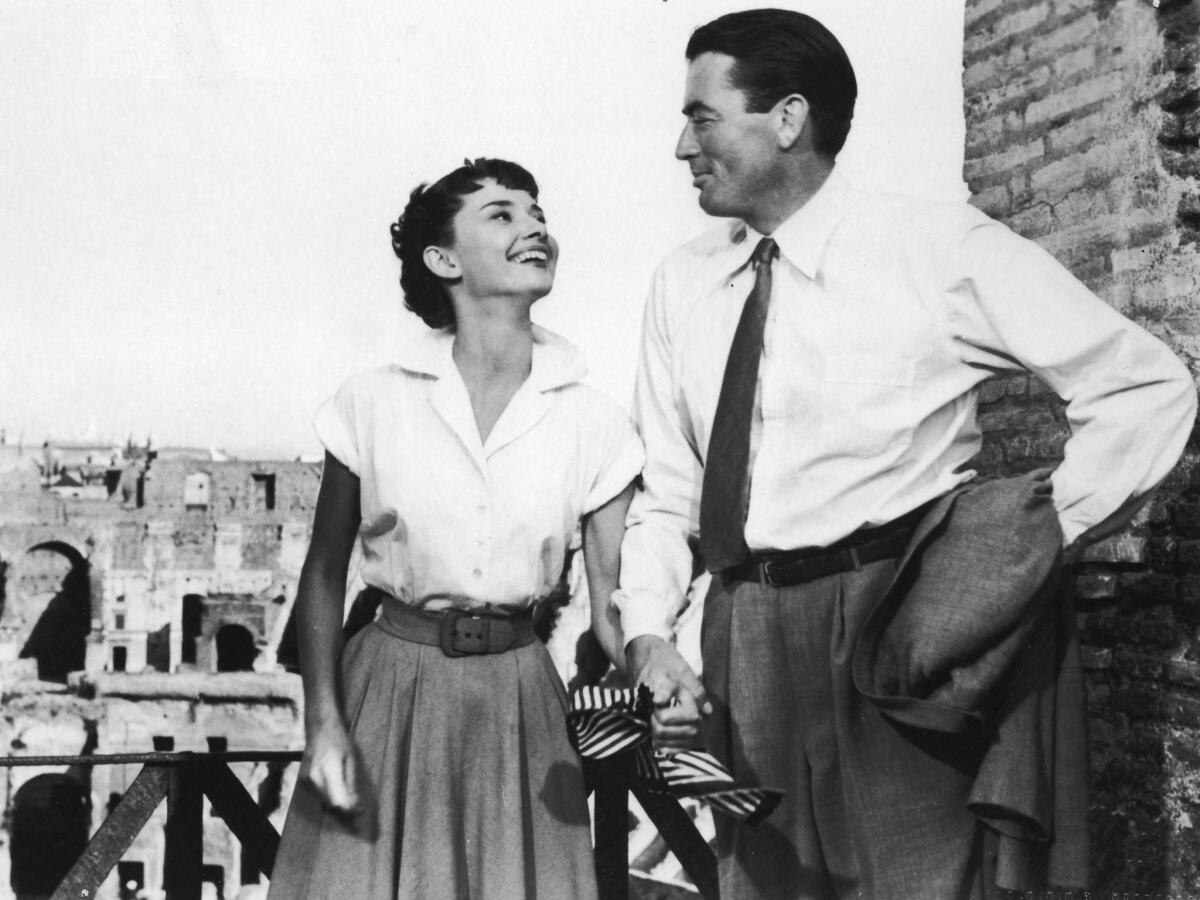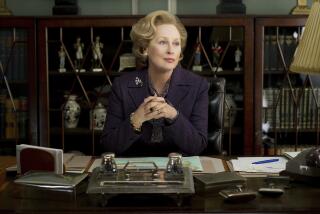Audrey Hepburn’s 1953 ‘Roman Holiday’ an enchanting fairy tale

William Wyler’s enchanting 1953 Cinderella-esque comedy, “Roman Holiday,” made Audrey Hepburn an overnight sensation. She not only won the Academy Award for best actress but she also received a Golden Globe, a British Academy of Film and Television Arts Award and the New York Film Critics Circle honor for her role as Ann, a sheltered princess on a goodwill tour of Europe who escapes her guardians in Rome and finds adventure and a storybook romance.
And the gamin actress, who was born in Belgium in 1929, also set a new fashion trend with her short hair and casually chic clothes — even as Edith Head won an Oscar for the film’s costume design.
“Many familiar stars have given great performances,” said film critic-historian Leonard Maltin. “But there are times when being an unknown is an invaluable asset. I think of Ben Kingsley in ‘Gandhi’ as an emblematic example of that and, certainly, Audrey Hepburn.”
Part of the film’s charm, said Maltin, “is there is a parallel between the character’s story and Audrey Hepburn. If you know anything about the background of the film itself, you can’t avoid thinking about that. It is not just a fresh, charming performance, it is a fresh, charming performance by someone blossoming into stardom right before your eyes.”
Though reports state that Jean Simmons was briefly considered for the role of Ann, Wyler wanted an unknown to play the part. “With anybody familiar, you have to first forget your previous associations with them, shed that baggage before you completely accept and embrace them in this new role,” said Maltin. “With an unknown, there is no such barrier.”
Hepburn had appeared in few films before being selected by Wyler, who at that time had won director Oscars for 1942’s “Mrs. Miniver” and 1946’s “The Best Years of Our Lives.” The young actress had small parts in 1951’s “Laughter in Paradise” and “The Lavender Hill Mob” and a more substantial role in the forgettable 1952 film “Secret People.”
Choosing a virtual unknown, said Maltin, was one of “many smart decisions William Wyler made regarding this film.”
TIMELINE: The Academy Awards through the years
Even before finding Hepburn, Wyler had insisted that Paramount allow him to shoot in Rome. Gregory Peck, who plays Joe Bradley, the American journalist whom the princess falls for, was hesitant to take on a secondary role, but Wyler persuaded him to join the film.
While in pre-production in Rome, the director traveled to London to look at ingenues for the lead. That’s where he met Hepburn, whom he described as “very alert, very smart, very talented and very ambitious.”
With Wyler on his way back to Rome, he asked Thorald Dickinson, who had directed Hepburn in “Secret People,” to do a screen test with her at Pinewood Studios in England — and to keep the cameras rolling after she completed her scene so he could watch the young actress in a more relaxed, natural state. Unaware she was still being filmed, Hepburn went on to have a lively chat with Dickinson about her experiences during World War II.
VIDEO: Highlights from the Envelope Screening Series
“She was absolutely delightful,” Wyler was quoted as saying when he saw the test. “Acting, looks and personality!”
He was so taken with her that he held up production for the actress to fulfill her commitment to star on Broadway in an adaptation of Colette’s “Gigi.” And in 1952, Audrey Hepburn began work on the movie that would change her life.
Hepburn’s career blossomed after “Roman Holiday.” Not only did she win the Academy Award in 1954 but she also snagged a Tony Award for “Ondine.” She would go on to earn Oscar nominations for 1954’s “Sabrina,” 1959’s “The Nun’s Story,” 1961’s “Breakfast at Tiffany’s” and 1967’s “Wait Until Dark,” and also starred in such classics as 1957’s “Funny Face,” 1963’s “Charade,” 1964’s “My Fair Lady” and 1967’s “Two for the Road.”
More to Read
Only good movies
Get the Indie Focus newsletter, Mark Olsen's weekly guide to the world of cinema.
You may occasionally receive promotional content from the Los Angeles Times.










